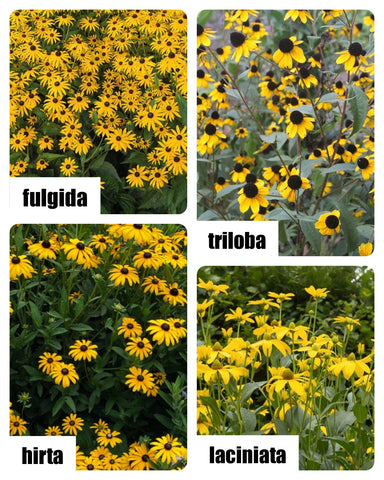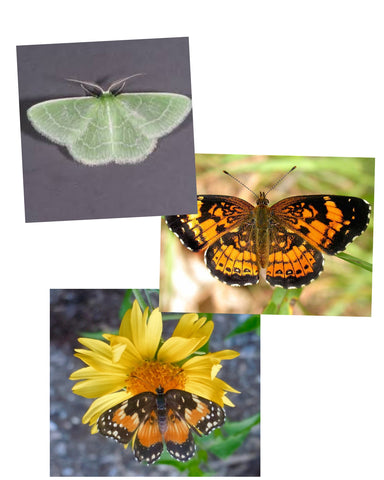

Native plant gardens just aren’t the same without Rudbeckia. It shows up as it wants, providing long lasting color and seeds that the songbirds enjoy. Rudbeckia flowers are cheery and often larval hosts for specific pollinators. However, there are so many types of Rudbeckia, it’s difficult to narrow down which one to plant in your garden. Here is a comparison of the Rudbeckia species of which occur in Northern Virginia.
|
Botanical Name: |
Rudbeckia hirta Black Eyed Susan |
Rudbeckia laciniata Green-headed Coneflower/ Cut-leaf Coneflower |
Rudbeckia triloba Three-lobed Coneflower |
|
|
Locally Occurs: |
Fairfax, Loudoun & |
All Counties | All Counties | Fairfax Loudoun Arlington |
|
Height: |
1-4 ft. stems |
1-3’ ft. stems 2-3 in Mar-Nov Bright-yellow Full Sun Moist to Dry |
3-10 ft. stems 3-4 in Jun-Nov Yellow Full Sun - Part Moist-Acidic |
2-5 ft. stems 2-3 in Jun-Nov Shade Yellow Full Sun - Part Dry to Moist |
|
Larval Host: |
Silvery Checkerspot & Wavy-Lined Emerald |
Gorgone Checkerspot & Bordered Patch butterfly | Wavy-lined Emerald | Silvery Checkerspot & Wavy-lined Emerald |
|
Life Cycle: |
Perennial |
Re-seeding Annual | Perennial | Perennial |
|
Notes: |
Coneflower shaped flower |
Tolerates afternoon shade | Spreads by underground rhizomes Distinctive leaf shape |
Drought Tolerant |
